Employment of Women in Engineering
Over the years, there has been an increase in the number of women working in Science, Technology, Engineering, and Mathematics (STEM) fields in the United States. While the number of men and women working in life science occupations, such as biological sciences, has reached parity, the percentage of women employed in engineering has unfortunately increased slowly in the last three decades. For example in the 1990’s women represented nine percent of the individuals working in architecture and engineering. By 2023, the percentage of women professionals in those fields had grown to 16.7 percent, but they are still underrepresented compared to their male counterparts.
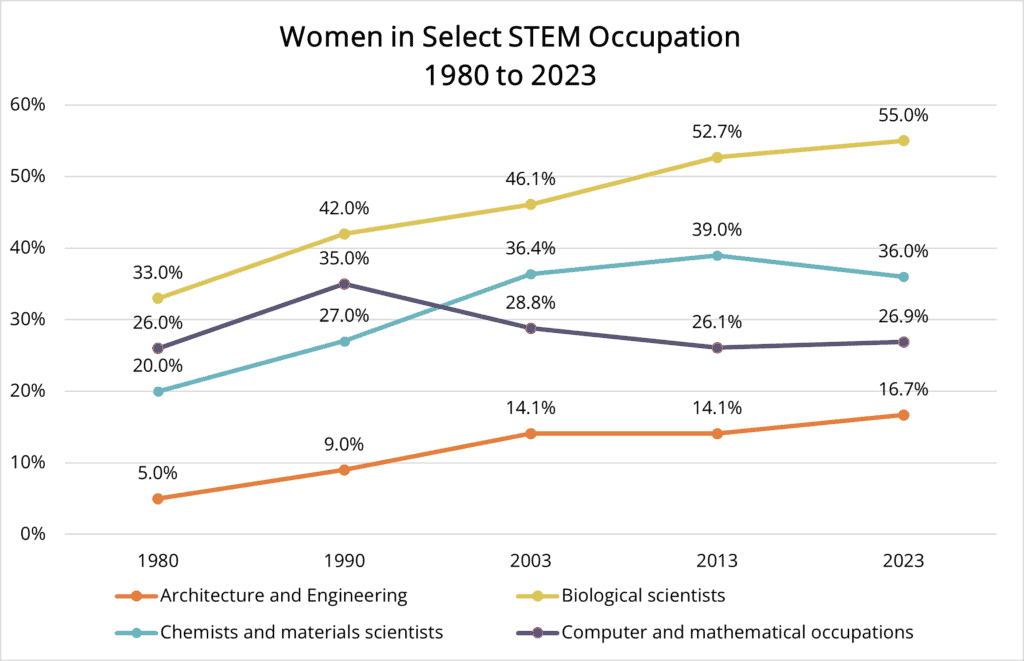
Although men comprise the majority of STEM professionals with a higher education degree, the number of women with bachelor’s, master’s, and doctoral degrees has increased since 2010. For instance, in 2010, approximately 720,000 women with bachelor’s degrees worked in STEM occupations. By 2021, that number had increased to over one million, representing a one percent increase in the number of women employed in this category. Notably, from 2010 to 2021, the percentage of women working in STEM occupations with a doctoral degree climbed from 31% to 36%, representing an increase of 128,000 women with a Ph.D. in STEM professions.
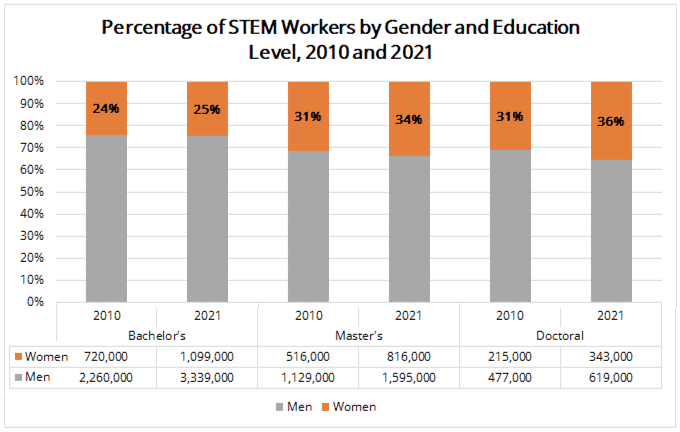
Looking at the overall percentage of women employed with bachelor’s degrees in 2021, only 7.7% of women worked in science and engineering (S&E) occupations. Most women (73.8%) worked non-S&E jobs, such as healthcare support workers, educators, and human protective service professionals. That same year, 18.5% worked in STEM-related occupations. These occupations can include S&E managers, S&E precollege teachers, or technologists and technicians (National Survey of College Graduates,2021).
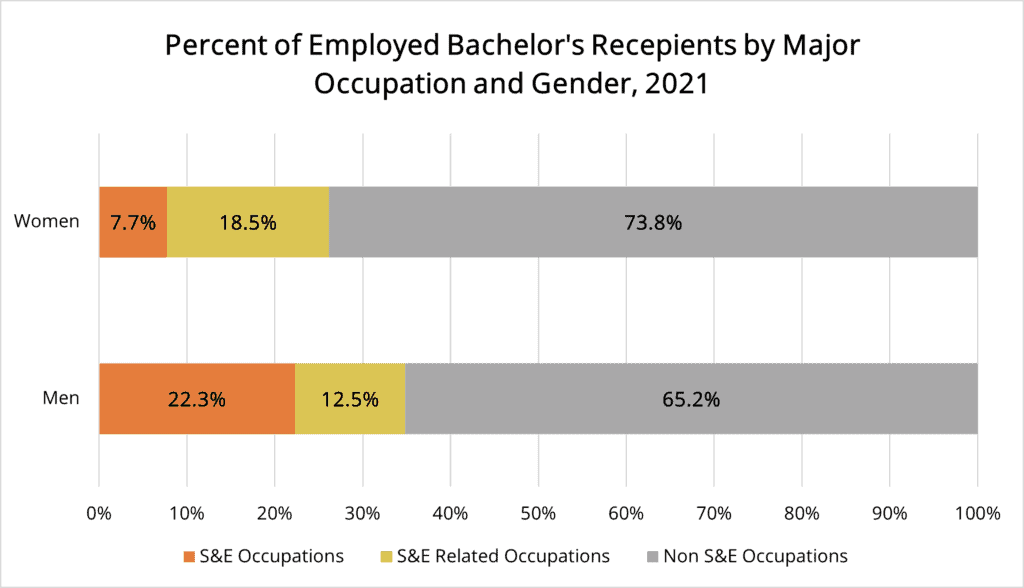
Employment by Discipline
The percentage of female engineers and computer professionals varies by specialization. In 2022, only 9% of electrical engineers were women compared to 32% of environmental engineers. In addition, only 18% of software developers and 25% of computer and information research scientists in the computer industry were women.
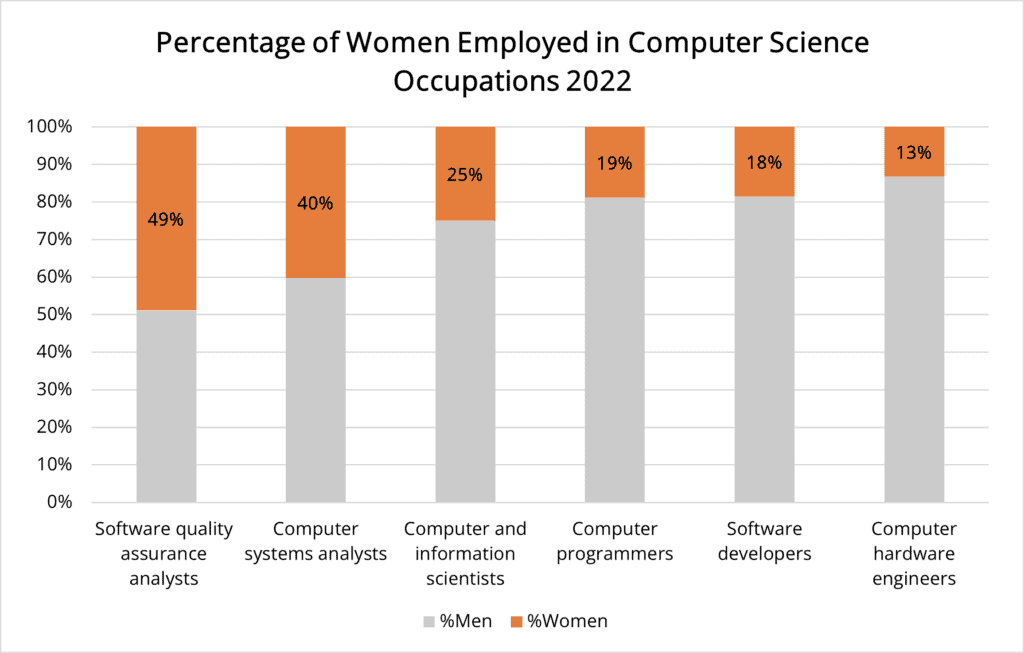
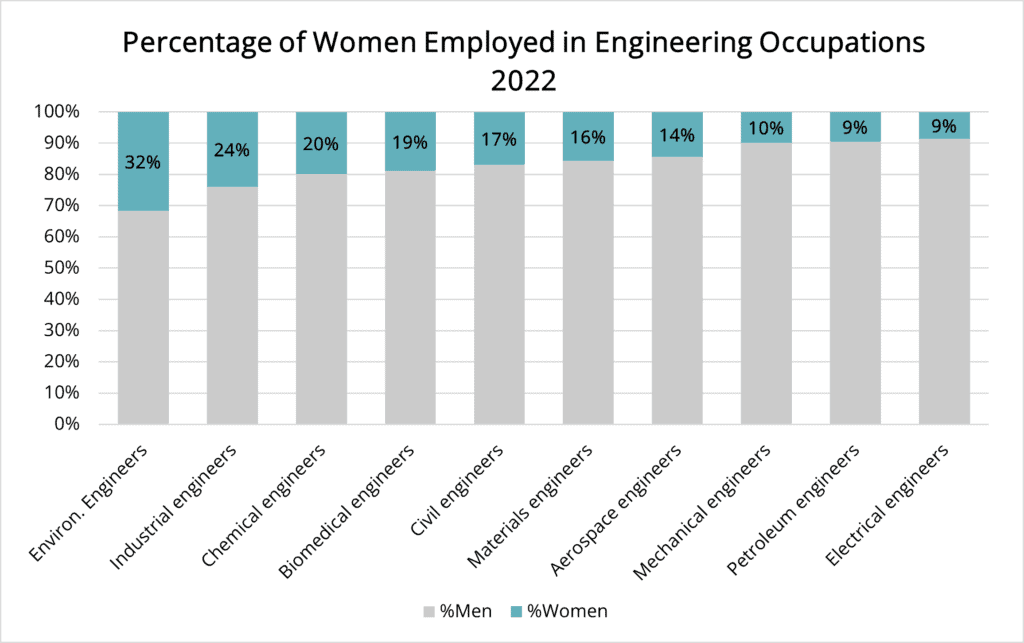
Employment of Women of Color
Among 25- to 34-year-olds with a STEM bachelor’s degree, women are underrepresented in engineering and computer careers compared to men of the same racial/ethnic origin. When it comes to women’s racial/ethnic identities, Black and Asian women are the most underrepresented in engineering careers, whereas Hispanic and white women are underrepresented in computer science and mathematics employment.
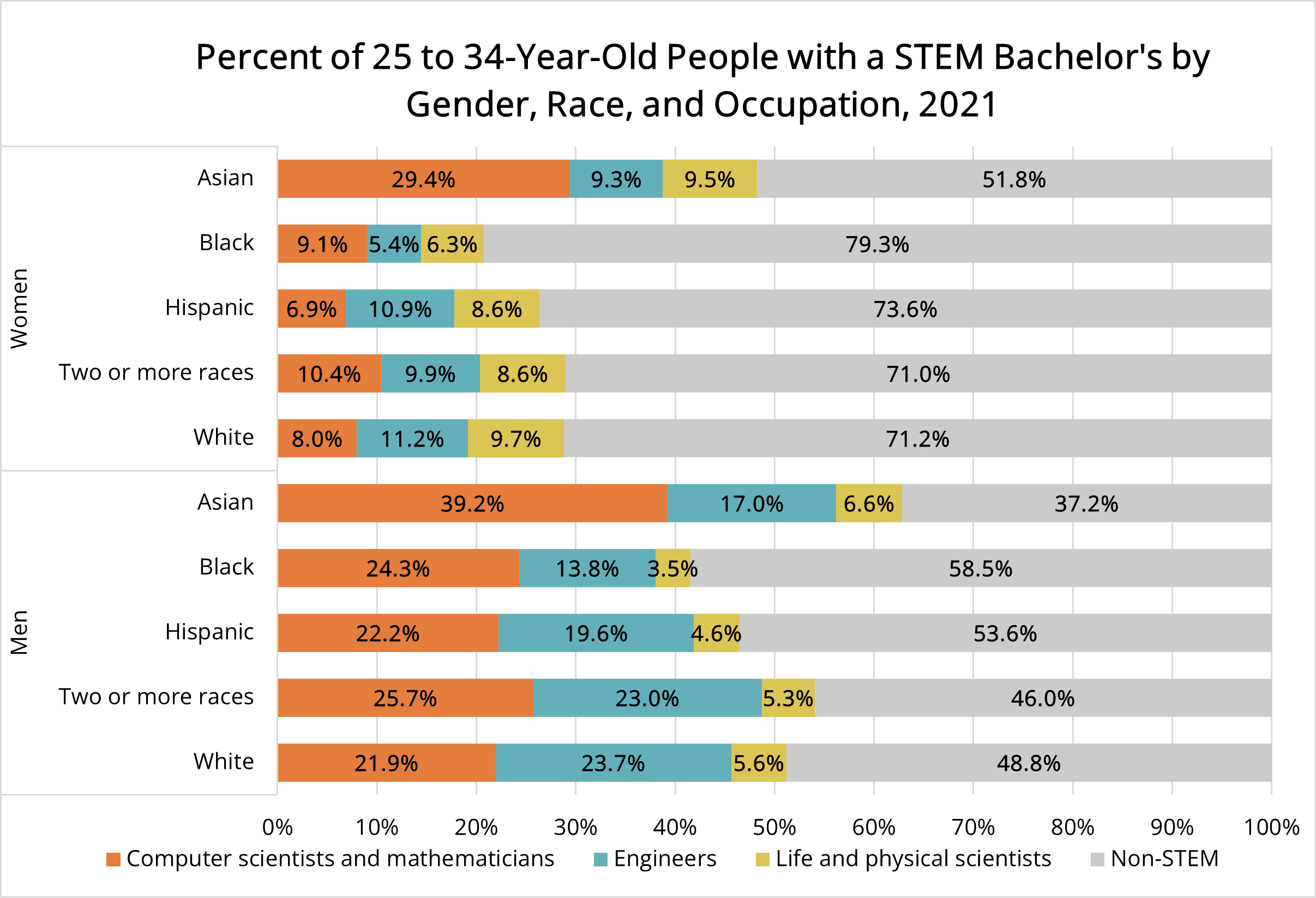
SWE Efforts to Increase Representation of Women of Color in the Engineering and Computer Science Workforce
- SWE Public Policy
- SWE Legislative Action Center and Congressional Outreach
- SWE Research on Women of Color in Early Career
- The Women of Color in Engineering Collaborative: A collaborative effort to advance women of Color in the engineering workforce.
Additional Resources
- Digest of Education Statistics, 2022. Table 505.30.
- National Center for Science and Engineering Statistics, National Survey of College Graduates, 2021.
- National Science Board, National Science Foundation. 2022. Science and Engineering Indicators 2022: The State of U.S. Science and Engineering. NSB-2022-1. Alexandria, VA. Available at https://ncses.nsf.gov/pubs/nsb20221
- Corbett, C., & Hill, C. (2015). Solving the Equation: The Variables for Women’s Success in Engineering and Computing. Washington, DC: American Association of University Women.
- National Science Board. 2021. The STEM Labor Force of Today: Scientists, Engineers, and Skilled Technical Workers.
- The Center for WorkLife Law. (2022). Pinning Down the Jellyfish: The Workplace Experiences of Women of Color in Tech.